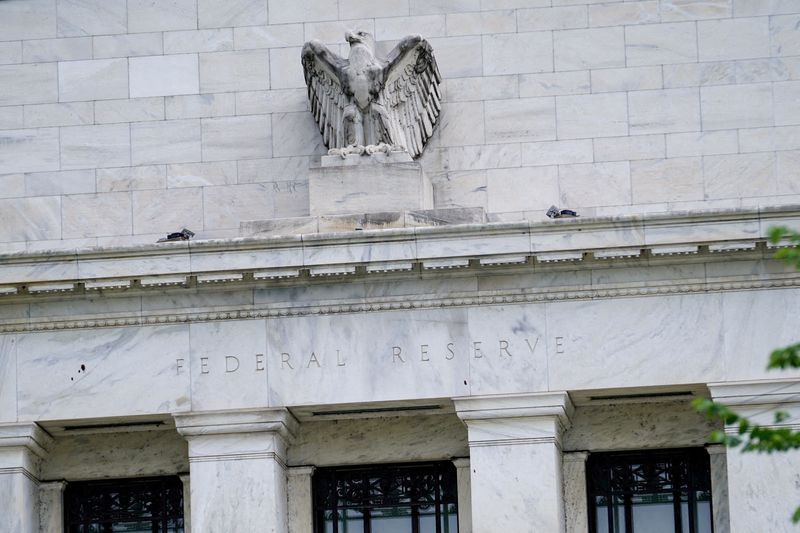By Michael S. Derby
NEW YORK (Reuters) – Inflows into Federal Reserve liquidity tools eased on the first day of the new quarter, although some in markets now worry there are signs of building money market pressures that could cause the central bank to rethink its balance sheet drawdown plans.
The Fed reported Tuesday that inflows into its reverse repo facility ticked down to $375.2 billion from $465.6 billion on Monday, which was the highest level seen since the end of June, the close of the second quarter. Meanwhile, the Fed’s Standing Repo Facility went back to zero after seeing an unexpected jump on Monday to $2.6 billion.
The surge and subsequent retreat into the reverse repo facility was fully expected, given long standing patterns of eligible firms – mainly money market funds – pouring cash into it on the final day of a given quarter. What was less expected on Monday was the action at the Standing Repo Facility, or SRF.
The SRF was established in 2021 to allow eligible financial firms to hand over bonds to the central bank in exchange for quick cash. The facility was envisioned as a quick way to get liquidity to markets and as a safety valve in times of stress, saving the Fed from having to intervene in markets to keep rates in line with desired levels.
Thus far, the SRF has seen little more than testing. Monday’s inflows were different, however, and while modest, they represented the first real usage of the facility, market participants said.
“This is very much a good-news/bad-news story,” Wrightson ICAP analysts told clients. The upside is that the facility finally got used, while the downside is that it got used at a 5% rate when broader repo market rates were notably higher, which suggests the facility did not put an “effective ceiling” on rates, the analysts said.
Scott Skyrm, who leads money market trading firm Curvature Securities, noted the jump in market rates the SRF failed to blunt was “reminiscent of the volatile days of 2018 and 2019 that culminated with the repo panic of Sept. 2019.”
Skyrm added one reason why the SRF may not have blunted the market rate rise owes to timing. Traders and investors sort out their needs in the morning whereas the daily SRF operation takes place in the early afternoon, after the market has already struggled.
Analysts at Barclays Capital said the SRF jump reflects a market where demand for short-term secured financing is rising amid an outlook of Fed rate cuts. And that could bear directly on the Fed’s ongoing efforts to shrink the size of its balance sheet via what’s called quantitative tightening, or QT, a process in which the Fed allows bonds it owns to mature and not be replaced.
“Funding demand exceeds 2019 levels across a number of metrics, which suggests the Fed may need to end QT sooner even if reserves are still abundant,” Barclays said. As of July markets were eying a spring stop to QT.
Over recent days both Fed Chairman Jerome Powell and Roberto Perli, who leads implementation of monetary policy at the New York Fed, have suggested that QT still has quite a bit of life in it amid still abundant market liquidity.
(Reporting by Michael S. Derby; Editing by Chizu Nomiyama)
Read the full article here

